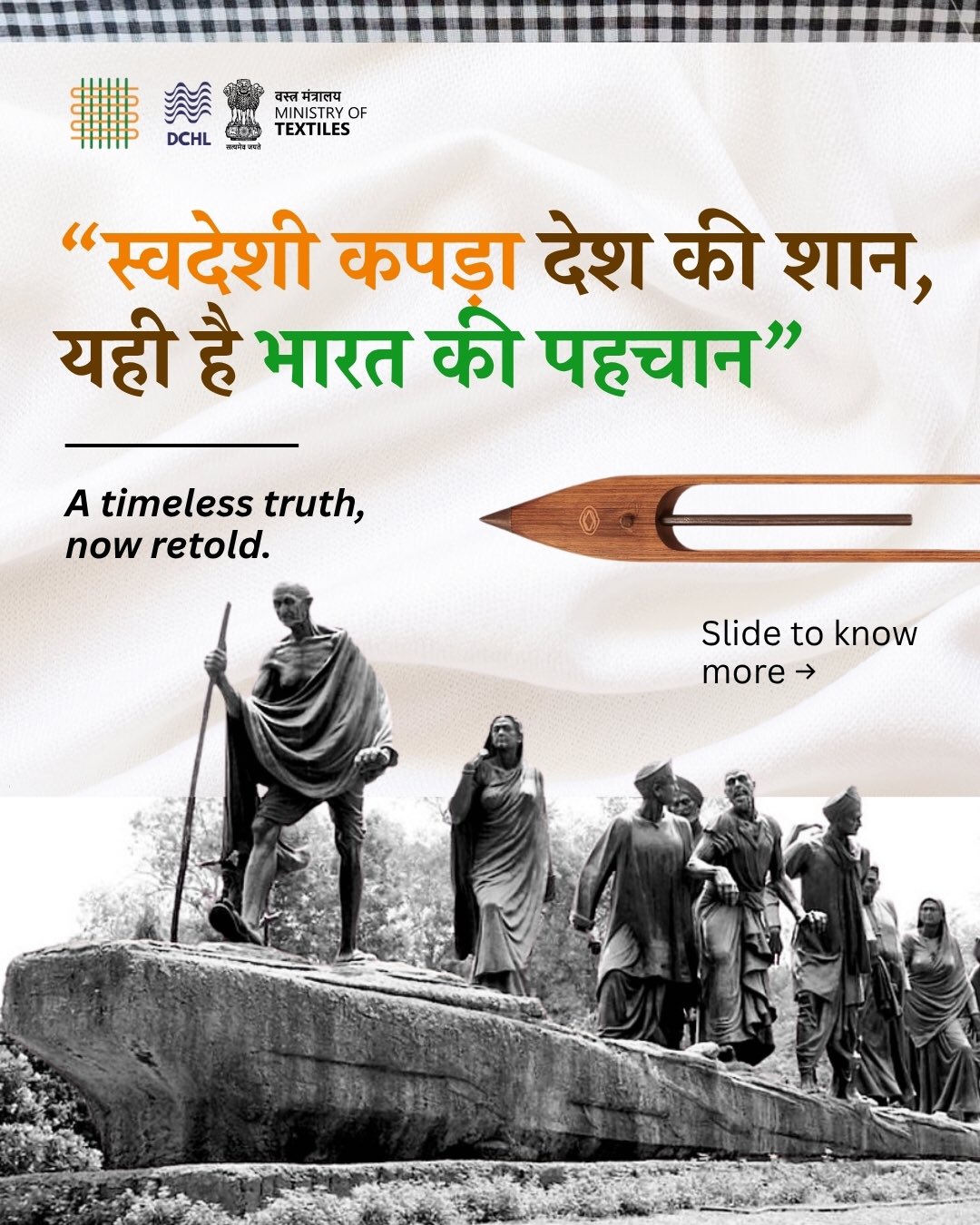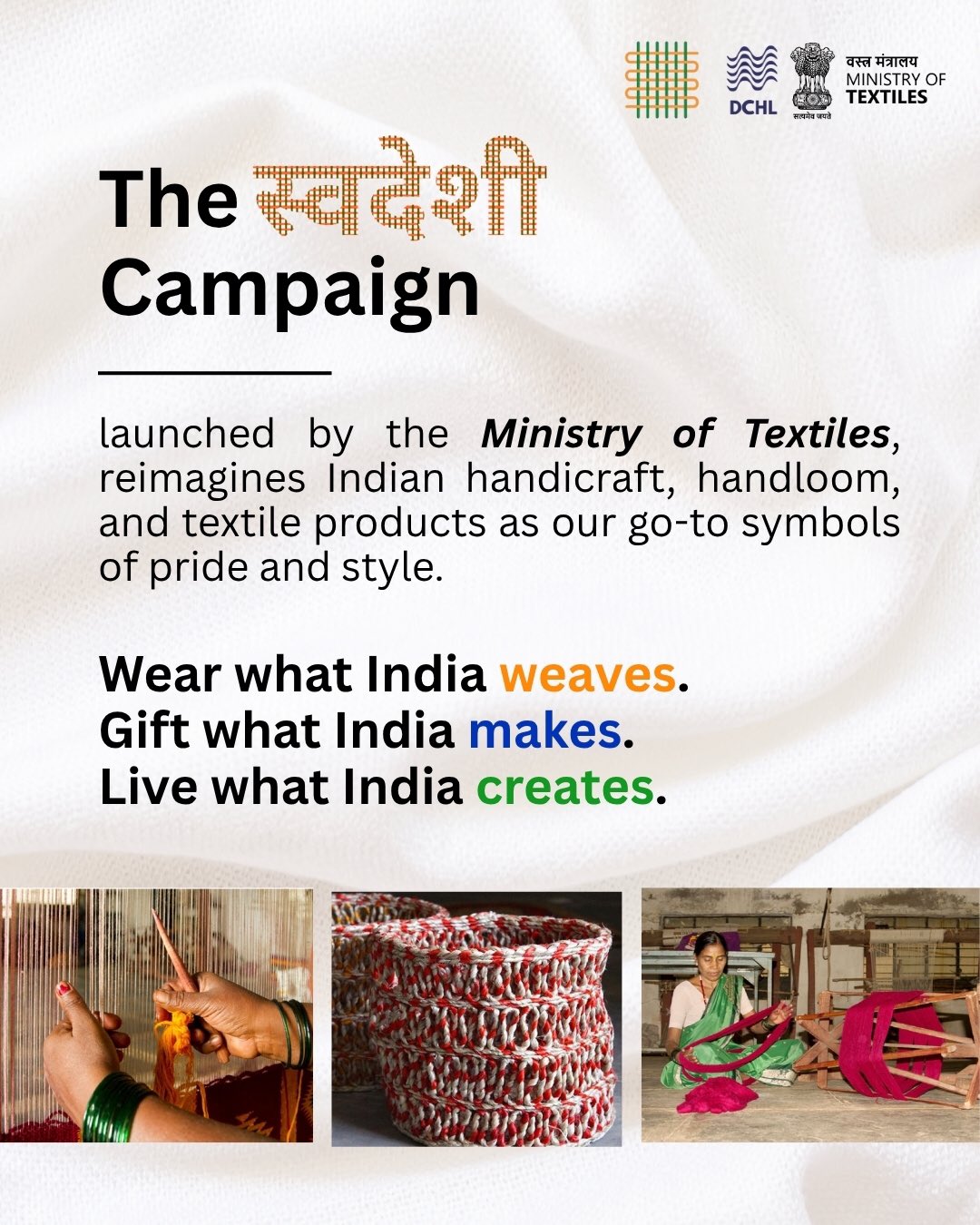A Modern Spin on a Historic Movement
More than a century after the original Swadeshi movement inspired Indians to reject foreign goods, the Ministry of Textiles has reignited that spirit with Swadeshi 2.0. The new campaign is a nationwide marketing push designed to promote Indian-made fabrics, handlooms, and handicrafts. Running for six to nine months, it aims to make Indian textiles not only a cultural statement but also a style statement for the country’s younger generations.
At the heart of the campaign lies its powerful slogan — “स्वदेशी कपड़ा देश की शान, यही है भारत की पहचान” — which translates to “Swadeshi cloth is the nation’s pride, it is India’s identity.” The initiative highlights that choosing local textiles is not just about fashion but about identity, pride, and economic empowerment.
Driving Pride, Production, and Participation
The Swadeshi 2.0 campaign has a clear vision: to increase domestic textile consumption, particularly among urban youth who have largely embraced global fast fashion. By promoting Indian weaves, traditional craftsmanship, and sustainable fabrics, the government aims to rebrand local textiles as premium, stylish, and globally relevant.
This campaign also strengthens the government’s broader goals of self-reliance under the Atmanirbhar Bharat mission. It is closely tied with ongoing initiatives such as the Production Linked Incentive scheme for textiles, PM MITRA mega textile parks, and the One District One Product program. Ministries, public sector undertakings, and educational institutions will also be encouraged to adopt Indian fabrics for uniforms, furnishings, and events, ensuring that the campaign penetrates both public and private spaces.
ADVERTISEMENT
Economic Context and Market Outlook
India’s textile and apparel market was valued at over 222 billion dollars in 2024 and continues to be one of the world’s fastest-growing. Of this, nearly 80 percent of production is consumed domestically, underscoring the vast potential of local demand. According to the Ministry of Textiles, households contribute around half of the consumption while industrial and technical textiles make up roughly a quarter.
The government’s recent decision to rationalize GST rates has further improved the business environment for textile manufacturers. The GST on man-made fibers and yarn has been reduced to five percent, and the tax on ready-made garments priced up to 2,500 rupees has also been set at five percent. This reduction in tax burden will make locally produced fabrics and garments more affordable and competitive.
A Rising Sentiment for Made in India
Swadeshi 2.0 comes at a time when calls for promoting Indian-made products are growing louder. From universities banning imported soft drinks to business leaders and spiritual icons like Baba Ramdev advocating for local products, the sentiment for economic nationalism is on the rise. The campaign captures this momentum by transforming pride in Indian products into a structured national movement.
The Ministry of Textiles is planning social media collaborations, awareness drives, and state-level exhibitions to celebrate the beauty and diversity of Indian fabrics. By blending traditional artistry with digital storytelling, the campaign hopes to appeal to the modern consumer’s sense of identity and conscious consumption.
ADVERTISEMENT
A Movement Beyond Fabric
Swadeshi 2.0 is more than a campaign to sell clothes. It is a statement of India’s creative strength, a tribute to millions of artisans, and a roadmap for sustainable growth. The coming months will reveal whether this modern revival of an old idea can turn every Indian wardrobe into a reflection of national pride.
Follow Marketing Moves on Instagram and Facebook for more stories on branding, campaigns, and the business of culture shaping the new India.

















